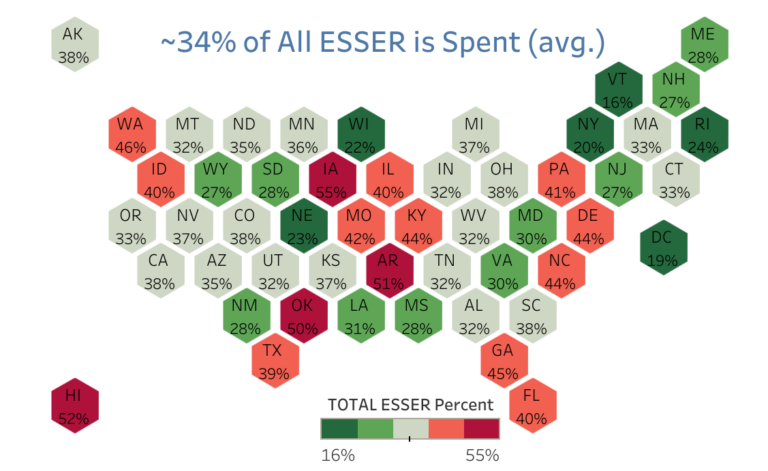Ben Chapman from The Wall Street Journal published an especially thoughtful piece on the pace at which districts are spending $122 billion in COVID-19 stimulus funds. It’s worth a read.
Understanding how, where and when stimulus funding has been “obligated,” “outlayed,” and spent continues to be a major priority of the W/A Research team. Here’s some additional data and context to help explain what it means, what we know, and – as importantly – what we do not know.
The Data
According to the U.S. Department of Education’s most recent spending report (November 30, 2022) schools have spent about
- 96 percent of ESSER I. School districts have received about 96 percent of their share of the CARES Act’s Elementary and Secondary School Emergency Relief Funds (ESSER I).
- 60 percent of ESSER II. School districts have received about 60 percent of their share of the Coronavirus Response and Relief Supplemental Appropriations Act ESSER account (ESSER II).
- 19 percent of ESSER III. School districts have received about 19 percent of their share of the American Rescue Plan’s ESSER account (ESSER III).
- 34 percent of all ESSER funds. School districts have received about 34 percent of all of the eligible ESSER funds (ESSER I, II, and III).
What It Means
The federal data reports what has been “obligated” and “outlayed” for each state. These are lagging indicators, so the actual numbers are likely a bit higher.
- “Obligated” means the amount of funding that the state agency has committed to sending to eligible school districts in the state. By law, this is at least 90 percent of the total amount sent to each state agency for each account (ESSER I, II, and III).
- “Outlayed” means the total amount of funding the state agency has sent to districts that have demonstrated an allowable cost under the law.
Interested in learning more? Contact the W/A Research team to access our proprietary data visualizations and decision support tools in an easily accessible and downloadable format for each state.




